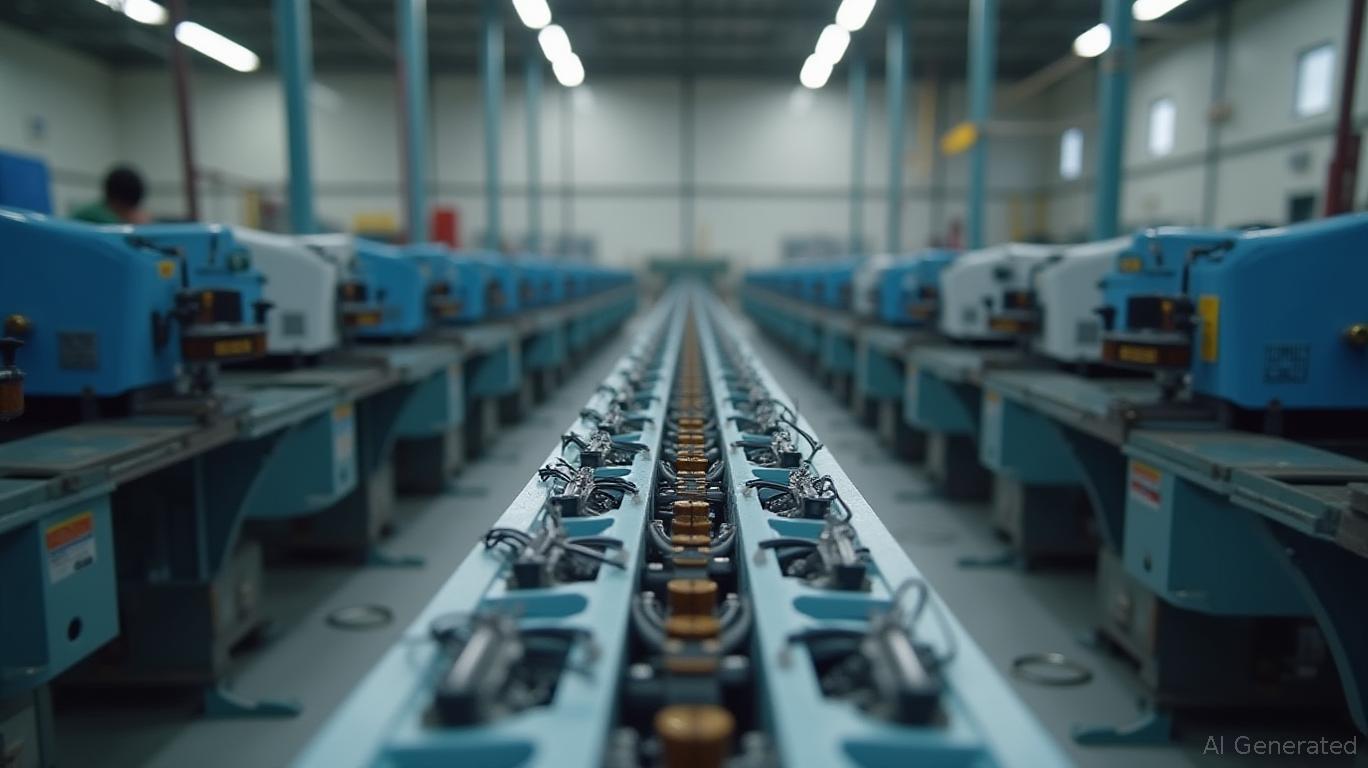Unusual Machines, Inc. (UMAC): Balancing Drone Dominance with the Unabomber's Shadow
The global drone market is on a trajectory to surpass $163.6 billion by 2030, driven by defense modernization,
, and consumer adoption. Yet, as Unusual Machines, Inc. (UMAC) races to capture this growth, its path is shadowed by a darker question: Does technological progress inherently risk societal control, as the Unabomber Ted Kaczynski warned? For UMAC, the answer lies in its strategic pivot to U.S.-centric manufacturing, defense partnerships, and transparency—a formula that may just redefine ethical tech growth while shielding investors from systemic risks.The Technium's Threat and UMAC's Counterplay
Kaczynski's critique of the “technium”—a self-sustaining technological system that erodes human autonomy—resonates in today's globalized supply chains. Overreliance on foreign manufacturers, like China's DJI, has left industries vulnerable to geopolitical shocks and opaque control. UMAC's response? A deliberate strategy to anchor its supply chain in the U.S., reducing dependency on foreign tech hubs. By opening its Orlando facility—a 17,000-square-foot drone motor production hub—UMAC is not just building components; it's asserting control over its “technium” destiny.

This move addresses two systemic risks Kaczynski highlighted: centralized control and fragility. By vertically integrating production (motors, receivers, VTXs) and dual-sourcing critical components, UMAC mitigates supply chain bottlenecks while ensuring no single entity (foreign or domestic) can monopolize its technology.
Defense Contracts: A Shield Against Volatility
The U.S. government's push for domestic production via the National Defense Authorization Act (NDAA) has turned defense contracts into both a revenue lever and a risk mitigant. UMAC's pursuit of Blue UAS certification—a DoD requirement for military drones—positions it as a Tier-1 supplier in a market projected to hit $48.4 billion by 2033.
Here's why this matters: Government contracts offer stability. Unlike consumer markets prone to fads, defense spending is recession-resistant. UMAC's Q4 2024 revenue surged 156% YoY, signaling scalability. Yet skeptics point to its $31.98 million net loss—a figure inflated by non-cash charges like goodwill impairment. With $3.76 million in cash and a $40M raise in May 2025, the company has a two-year runway to prove execution.
Navigating Shorts and the “Ethical” Edge
Short sellers have targeted UMAC's small workforce (16 employees) and reliance on third-party manufacturers, arguing it lacks scale. But this model—outsourcing non-core functions while owning IP—mirrors tech giants like Apple, which leverage partnerships for flexibility. Meanwhile, UMAC's simplified cap table (88.9% held by retail investors) and auditor changes signal a commitment to transparency, countering Kaczynski's fear of corporate opacity.
The company's valuation also offers a compelling entry point. At $112.43 million market cap, UMAC trades at 7x 2026 revenue estimates—far below peers like GoPro or DJI's rumored $15 billion valuation. Analysts like Barry Sine of Litchfield Hills Research see a $20 price target, implying 83% upside from its May 2025 offering price.
The Investment Dilemma: Turbulence vs. TAM
Investors face a clear calculus: UMAC's near-term risks (execution delays, short attacks, Chinese competition) are steep, but its long-term TAM—$1.9 billion with Blue UAS-certified products—is game-changing. The global drone accessories market is set to grow from $17.5B to $115B by 2032, with U.S. reshoring policies fueling demand for domestic suppliers.
For risk-tolerant investors, UMAC's stock offers a leveraged play on this shift. Its stock's high volatility (beta >1.5) suggests it could surge if it secures a major defense contract or achieves Blue UAS certification. Historical backtest data from 2020 to 2025 reveals that when UMAC beat earnings estimates, holding for 30 days delivered a 255.71% return—though with significant volatility (144.76%) and a maximum drawdown of -59.71%. This underscores the strategy's high-risk, high-reward profile, aligning with the company's growth potential and execution challenges. The $20 price target assumes 15% revenue CAGR—a plausible scenario given its NDAA tailwinds and Aloft acquisition's software synergies.
Final Verdict: Buy with a Long Lens
UMAC is not a low-risk bet. Near-term headwinds—from short sellers to supply chain hiccups—are real. But its alignment with NDAA-driven reshoring, defense partnerships, and ethical governance (transparency, dual-sourcing) positions it as a counterweight to Kaczynski's dystopian vision. With a $115B+ market beckoning and a valuation far below peers, UMAC's stock rewards investors who prioritize long-term exposure over short-term noise.
Rating: Buy
Price Target: $20
Risk Rating: High (volatility, execution risks)
For those willing to brave the storm, UMAC's bet on ethical tech growth—and its fight against the technium's chains—could yield extraordinary rewards.

Comments
No comments yet